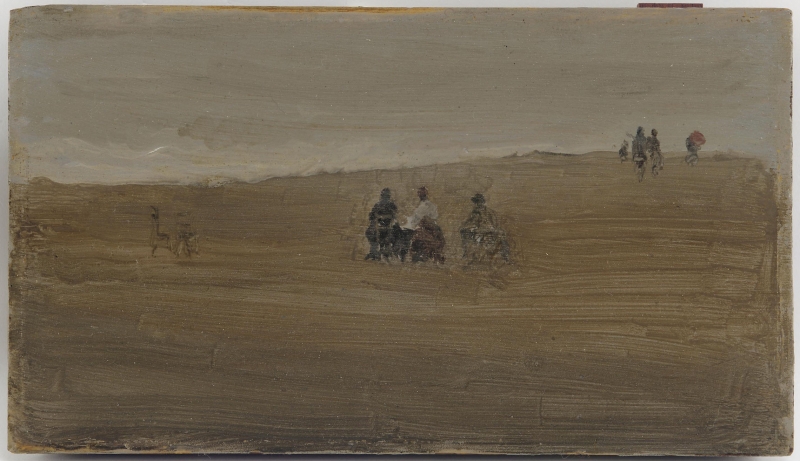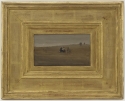Composition
Pentimenti show that the group of three figures in the centre was once farther to the left and higher up, breaking the line of water. The group was also tried out further to the right.
Technique
The essentially simple composition of long fluid brushstrokes reaching from one side of the panel to the other is complicated and contradicted by the fussy work around the seated figures, which must have been painted while the background was still wet. The colour is sombre, the brown sand and grey sea matching the title exactly, and painted over a pale grey ground. It is unique in Whistler's work in having no horizon visible.
Conservation History
An early photograph, dating from when it was at Knoedler's in New York, shows no change in the picture's condition, except that there is now a small scratch or abrasion at lower right.
According to Freer Gallery records, it was cleaned and varnished in 1937, resurfaced in 1938, and again cleaned and resurfaced in 1951.
Frame
1886: The frame was probably made for the 1886 Dowdeswell exhibition. 1
Last updated: 31st December 2020 by Margaret








